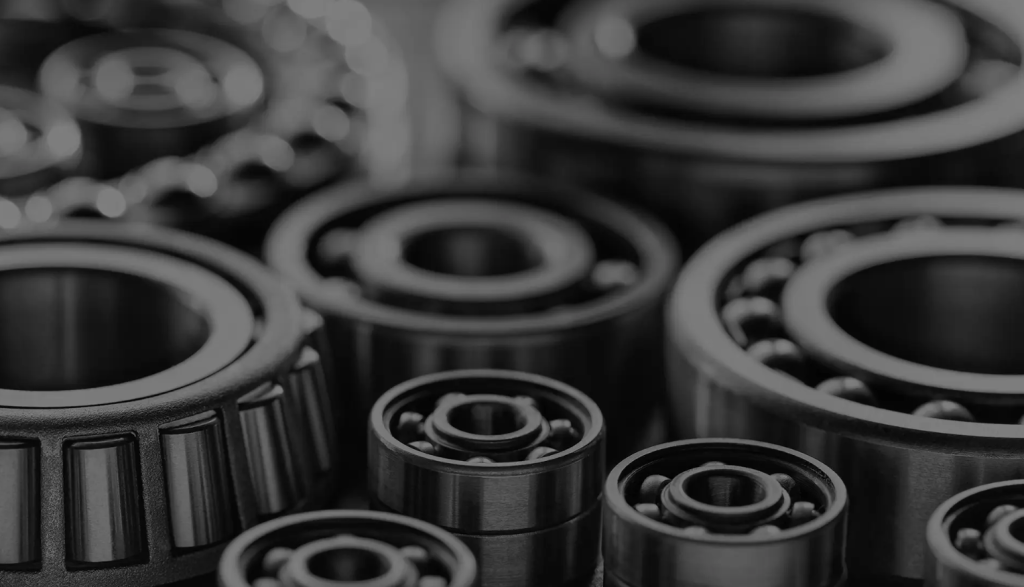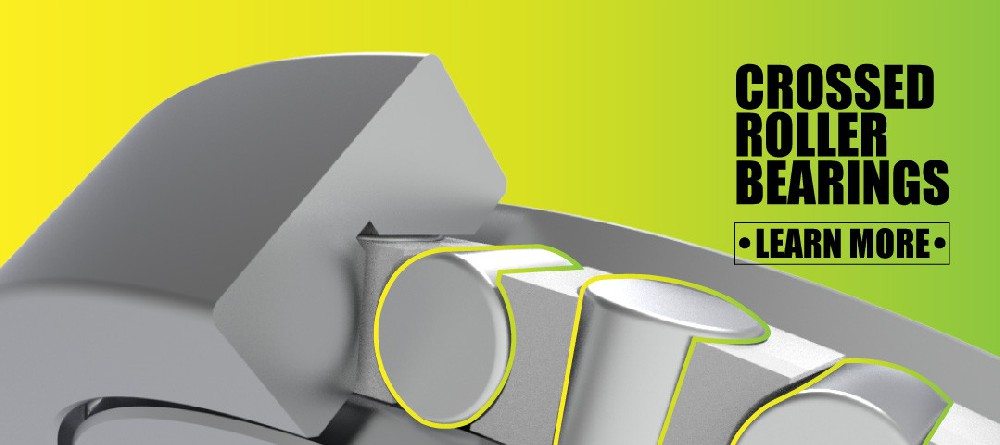Choosing the right industrial bearing is essential for the smooth operation and longevity of any machine. Industrial bearing play a crucial role in supporting loads, reducing friction, and enabling the movement of rotating or sliding parts within equipment. With a wide variety of bearing types available, each designed for specific load capacities, speeds, and environmental conditions, selecting the appropriate bearing can be a complex task.
Making the wrong choice can lead to increased wear, frequent breakdowns, and costly downtime. On the other hand, the right industrial bearing not only enhances machine efficiency but also reduces maintenance costs and improves overall reliability. Factors such as load type, operating speed, environmental conditions, precision, size, lubrication, and cost all influence the selection process. Understanding these factors is key to making an informed decision that meets your specific application needs.
Industrial Bearing Selection Guide for Specific Applications

In this guide, we will explain the step-by-step approach to choosing the right industrial bearing for your application, helping you optimize machine performance and extend service life.
Choosing the right industrial bearing ensures efficient machinery operation, reduces downtime, and lowers maintenance costs. This guide breaks down key steps and factors to consider, helping you make informed decisions without confusion. Let’s dive into the essential considerations. Visit here!
Understanding Industrial Bearings: Basics You Need to Know
An industrial bearing is a mechanical component designed to support loads and allow constrained motion, usually rotation or linear movement, while minimizing friction between moving parts. Bearings are critical in nearly every piece of machinery, from small electric motors to large industrial equipment.
Key Functions of Industrial Bearings
- Load support: Bearings carry radial, axial, or combined loads.
- Reduce friction: Bearings allow parts to move smoothly with minimal resistance.
- Maintain alignment: Bearings keep shafts or components correctly positioned.
- Enable movement: Bearings facilitate rotational or linear motion in machines.
Common Types of Industrial Bearings
- Ball Bearings: Use spherical balls to separate races, handling moderate radial and axial loads with high speeds.
- Roller Bearings: Employ cylindrical or tapered rollers to support heavy radial loads and some axial loads.
- Plain Bearings: Sliding surface bearings without rolling elements, suitable for heavy loads at low speeds.
- Specialty Bearings: Include magnetic bearings or ceramic bearings for specialized applications.
Why It Matters
Understanding the types and basic functions of industrial bearings helps in narrowing down options based on the machine’s demands. The right bearing type is the foundation of good selection.
Step 1: Identify Load Types and Magnitudes
Load is the primary factor influencing industrial bearing choice.
Types of Loads
- Radial Load: Acts perpendicular to the shaft axis. Common in rotating equipment.
- Axial Load (Thrust Load): Acts parallel to the shaft axis, either pushing or pulling.
- Combined Load: Bearings often experience a combination of radial and axial forces.
Measuring Load
- Obtain load values from equipment manuals, engineering calculations, or sensor data.
- Use units such as Newtons (N) or pounds-force (lbf).
- Consider peak loads, average loads, and dynamic variations.
Impact on Bearing Selection
- Bearings are designed with specific load ratings. Exceeding these can cause early failure.
- For heavy radial loads, roller bearings are preferred.
- For significant axial loads, thrust or tapered roller bearings work better.
- Ball bearings suit applications with lower loads but higher speeds.
Checklist for Load Assessment
- Determine if load is radial, axial, or combined.
- Calculate magnitude of each load type.
- Identify load fluctuations or shocks.
- Choose bearings rated for maximum expected load plus safety margin.
Step 2: Consider Operating Speed
The operating speed directly affects bearing performance and lifespan.
Speed Factors
- Bearings have maximum allowable speeds, beyond which heat and wear increase.
- Higher speeds demand lower friction bearings like ball bearings or ceramic bearings.
- Low-speed applications can use heavier-duty bearings like roller or plain bearings.
How Speed Influences Selection
- High-speed (>10,000 RPM): Prioritize ball bearings with good lubrication.
- Moderate-speed (1,000 to 10,000 RPM): Roller or tapered bearings are suitable.
- Low-speed (<1,000 RPM): Plain bearings or spherical roller bearings can handle heavy loads.
Speed Ratings
- Check manufacturer’s speed rating charts.
- Consider shaft diameter and bearing bore size for actual operating speed.
Speed and Heat Generation
- Higher speeds increase heat, affecting lubrication and bearing material.
- Ensure appropriate cooling or lubrication to prevent overheating.
Step 3: Environment and Operating Conditions
Bearings often operate in challenging environments, making this step critical.
Environmental Factors
- Temperature: High temps degrade lubricants; low temps affect grease consistency.
- Contaminants: Dust, dirt, water, and chemicals cause corrosion and abrasion.
- Vibration and Shock: Equipment subjected to impacts requires tougher bearings.
- Corrosion Resistance: Marine or chemical environments need stainless steel or coated bearings.
Adapting Bearings for Conditions
- Use sealed or shielded industrial bearings to protect from contaminants.
- Select heat-resistant materials for high-temp environments.
- Choose corrosion-resistant materials for chemical or marine applications.
- Consider vibration-damping designs in high-impact settings.
Environment Checklist
- Identify operating temperature range.
- Assess contamination risks.
- Determine shock and vibration exposure.
- Select bearing with suitable protection and materials.
Step 4: Bearing Precision and Tolerance
Precision impacts bearing fit, smoothness, and noise levels.
Precision Levels
- Standard Precision: Suitable for general industrial machinery.
- High Precision: Required for aerospace, robotics, or medical devices.
- Precision is measured by dimensional accuracy and internal clearance.
Why Precision Matters
- Higher precision bearings run smoother, with less vibration and noise.
- Tight tolerances reduce wear but cost more.
- Select precision based on application demands and budget.

Precision Selection Tips
- Use standard precision for heavy-duty, less sensitive machines.
- Use high precision where alignment and smoothness are critical.
- Consult manufacturer tolerance charts for detailed specs.
Step 5: Bearing Size and Mounting
Size and mounting affect compatibility and installation ease.
Size Considerations
- Must match shaft diameter and housing bore.
- Oversized bearings can cause misalignment and stress.
- Undersized bearings risk premature wear.
Mounting Methods
- Press-fit: Bearing is pressed onto shaft or into housing; requires tight tolerances.
- Slip-fit: Bearing slides onto shaft easily; needs locking devices.
- Adapter sleeves: Facilitate mounting/removal and correct fit.
Space Constraints
- Some machines require compact bearings.
- Choose bearings that fit within design envelopes without sacrificing load capacity.
Size and Mounting Checklist
- Measure shaft and housing precisely.
- Select mounting type compatible with maintenance capabilities.
- Ensure proper tools and procedures for mounting to avoid damage.
Step 6: Lubrication and Maintenance Requirements
Lubrication prevents friction, wear, and corrosion.
Lubricant Types
- Grease: Most common; good for sealed bearings and low to moderate speeds.
- Oil: Better for high speeds or heat dissipation; requires circulation systems.
- Solid Lubricants: For extreme conditions or dry applications.
Bearing Design and Lubrication
- Sealed Bearings: Pre-lubricated, reduce maintenance but limited lifespan.
- Open Bearings: Require periodic lubrication and cleaning.
Maintenance Considerations
- Assess accessibility for lubrication.
- Consider maintenance intervals based on application criticality.
- Monitor lubricant condition and replace as needed.
Lubrication Checklist
- Choose lubricant type matching speed, load, and environment.
- Decide between sealed or open bearings.
- Plan for maintenance access and schedule.
Step 7: Cost Considerations and Lifecycle Analysis
Cost is important but shouldn’t override performance.
Cost Factors
- Initial price varies by bearing type, size, precision, and materials.
- High-quality bearings often cost more upfront but last longer.
- Poor quality bearings increase downtime and maintenance costs.
Lifecycle Cost Approach
- Calculate total cost including purchase, installation, maintenance, and downtime.
- Consider bearing reliability and expected service life (L10 life).
- Use manufacturer data and historical performance to estimate lifecycle costs.
Balancing Cost and Performance
- Avoid cheapest bearings for critical applications.
- Invest in quality bearings where failure costs are high.
- Use cost-benefit analysis to justify premium bearings.
Key Bearing Types and Their Application Fit
Understanding common industrial bearing types and their typical uses simplifies selection.
| Bearing Type | Load Capacity | Speed Range | Typical Applications | Environment Suitability |
|---|---|---|---|---|
| Ball Bearings | Moderate radial & axial | High (up to 20,000 RPM) | Electric motors, conveyors, pumps | Clean, moderate temp environments |
| Roller Bearings | Heavy radial, some axial | Moderate to high | Gearboxes, cranes, heavy machinery | Shock and vibration present |
| Tapered Roller Bearings | Heavy combined loads | Moderate | Automotive hubs, industrial gearboxes | High load, impact environments |
| Spherical Roller Bearings | Heavy radial, misalignment | Moderate | Mining, paper mills, construction | Harsh, contaminated environments |
| Plain Bearings | Very heavy, low speed | Low | Presses, heavy machinery | High load, corrosive environments |
Frequently Asked Questions (FAQs)
Q1: How do I know if a bearing can handle my machine’s load?
Check the bearing’s dynamic and static load ratings against your calculated loads, including safety factors.
Q2: Can industrial bearings operate without lubrication?
Most cannot; lubrication is essential to reduce friction and wear.
Q3: What happens if I select a bearing with insufficient speed rating?
Excess heat and premature bearing failure due to friction and lubricant breakdown.
Q4: Are sealed bearings always better than open bearings?
Not necessarily. Sealed bearings reduce maintenance but may not be suitable for all speeds or temperatures.
Q5: How often should industrial bearings be replaced?
Replacement depends on operating conditions, load, speed, and maintenance but usually follows manufacturer’s L10 life estimates.

Conclusion
Selecting the right industrial bearing is a vital step in ensuring the reliability and efficiency of your machinery. A well-chosen bearing can handle the specific load types and magnitudes, operate effectively at the required speeds, and withstand the environmental conditions it will face. It also aligns with the precision needs, fits properly within the design constraints, and matches lubrication and maintenance capabilities. While cost is always a factor, focusing solely on price can lead to premature failures and higher long-term expenses. Instead, a balanced approach that considers lifecycle costs and performance will yield better results. By carefully assessing each factor—from load and speed to environment and maintenance—you can avoid common pitfalls and choose an industrial bearing that maximizes uptime and reduces repair costs. Ultimately, the right bearing not only supports your machinery but also contributes significantly to operational success and profitability. Keeping these considerations in mind will help you make smart, data-driven decisions that stand the test of time.

